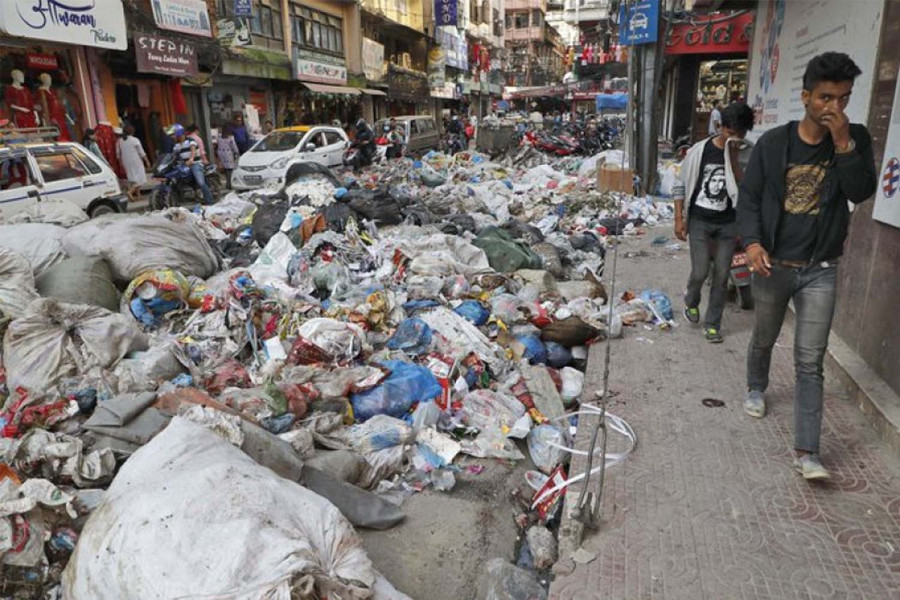Editorial
A city that stinks
Kathmandu desperately waits for a new mayor for an end to its waste management problem.
If irony were a human being, it would be Bidya Sundar Shakya. The meaning of his middle name—beautiful—falls flat in front of the mounds of garbage strewn all across Kathmandu. As he disappears into nothingness after a forgettable stint, he is sure to be remembered as a mayor who promised metro trains to Kathmanduites, only to leave them under a haze of poisonous methane gas at the end of his five-year stint. Kathmandu, the mythical Alakapuri Nagari, is today an excrescence, an apt reminder of the failure of the likes of Bidya Sundar who promise big and fail to live up to people’s expectations.
So huge is the garbage problem that residents of the Teku area in Kathmandu-12 resorted to padlocking the waste transfer station after the garbage collected from various places in the city remained piled up for weeks. It is a wonder how Teku residents could endure the stink for so many days before finally coming out of their homes and speaking up. In fact, every nook and corner in the city is full of garbage piles, and locals have been subjected to stink and health hazards for weeks now. As the whole of the country remains glued to their television sets seeking new updates on the local elections, Kathmandu, the very centre of the country, continues to stink and desperately waits for a new mayor to take concrete action towards ending the waste management problem.
As per the Waste Management Baseline Survey of Nepal 2020, published by the Central Bureau of Statistics, the average number of human resources assigned for waste management was 118 for metropolitan cities, 59 for sub-metropolitan cities, and 12 for municipalities. This, the survey found out, was a gross lack of staff in waste management. Kathmandu Valley itself generates 1,200 tonnes of solid waste per day, half of that amount produced from Kathmandu Metropolitan City alone. Banchare Danda, an alternative waste management site in Nuwakot, is nearing overcapacity. Residents of Sisdol, where the garbage of Kathmandu ends up, have once again stopped garbage trucks from reaching there, as they claim their demands remain unfulfilled. As a result, garbage trucks have failed to reach the dumping site since April 24.
Meanwhile, authorities at Kathmandu Metropolitan City’s Environment Management Department have already conceded failure as they say it is impossible to fulfil their demands. Garbage dumping sites have for long remained a thorn in the flesh, for there has hardly been a serious attempt at finding a long-lasting solution. As the monsoon approaches, there is imminent danger of cholera emanating from the garbage problem, and the roads leading to the dumping site, even if the disagreement with the locals clears up, getting damaged, leading to further obstruction. The city cannot continue to leave residents exposed to health hazards for its failure to negotiate a deal with the stakeholders. Lack of roads, or the protests of residents of Sisdol is not the real problem; what is at the heart of the current imbroglio is the lethargy and utter irresponsibility on the part of the city authorities to find a lasting solution to the problem.




 7.12°C Kathmandu
7.12°C Kathmandu














